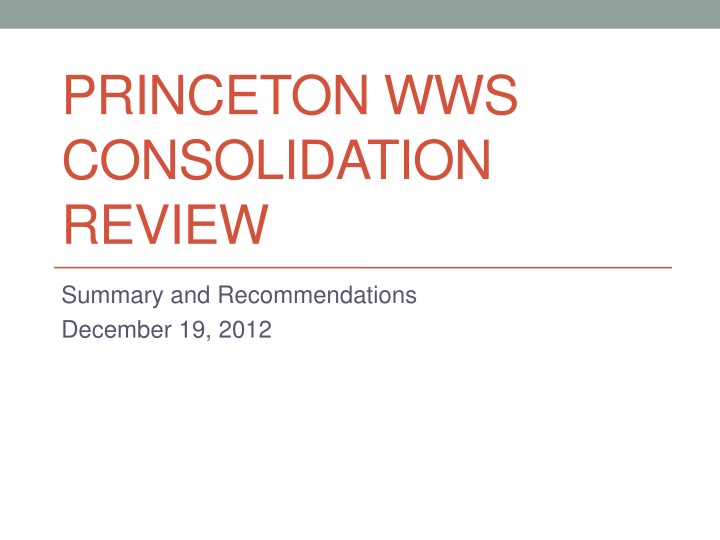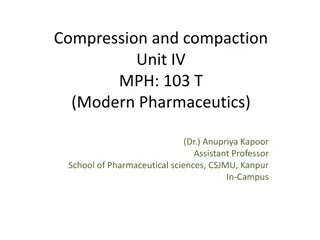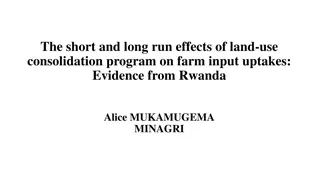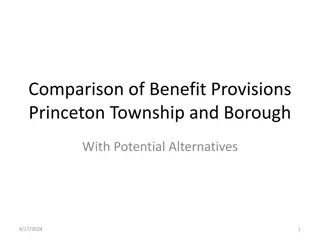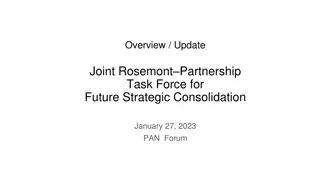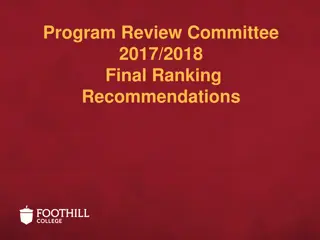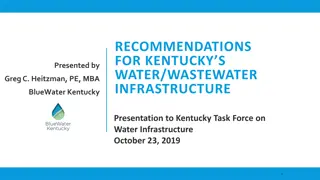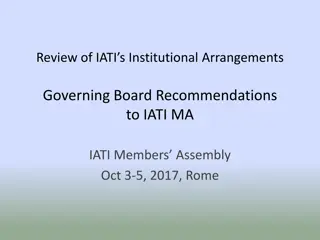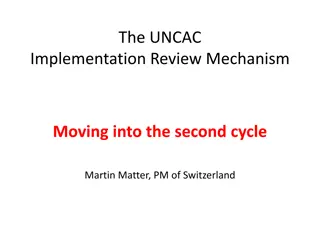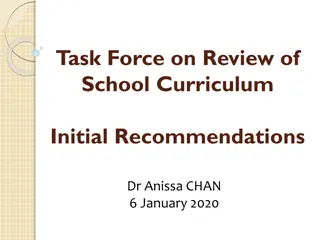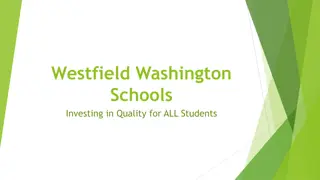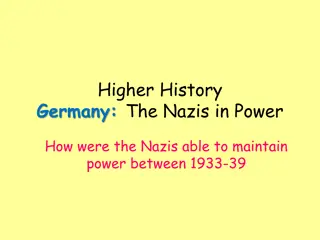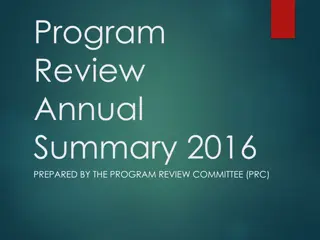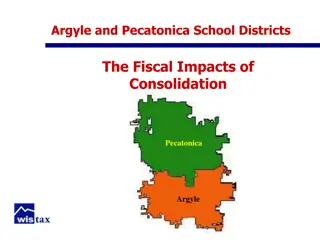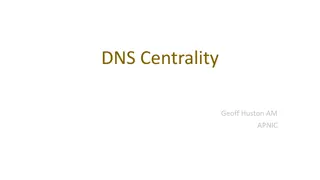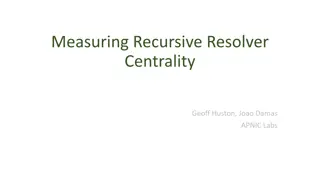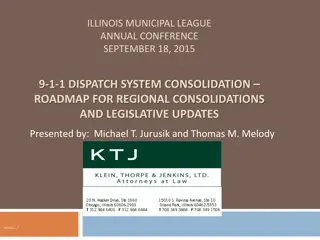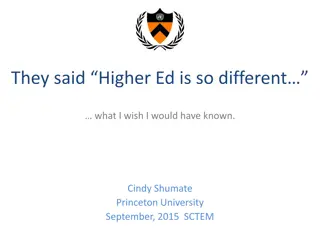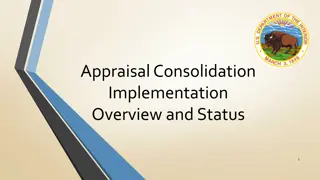Princeton WWS Consolidation Review: Summary and Recommendations
Summary and recommendations from a comprehensive evaluation of the Princeton consolidation case, including background information, research methodology, team involvement, and key events documentation. The study delves into the historical context, factors contributing to success, and lessons learned, providing insights for a broader audience beyond Princeton.
Download Presentation

Please find below an Image/Link to download the presentation.
The content on the website is provided AS IS for your information and personal use only. It may not be sold, licensed, or shared on other websites without obtaining consent from the author.If you encounter any issues during the download, it is possible that the publisher has removed the file from their server.
You are allowed to download the files provided on this website for personal or commercial use, subject to the condition that they are used lawfully. All files are the property of their respective owners.
The content on the website is provided AS IS for your information and personal use only. It may not be sold, licensed, or shared on other websites without obtaining consent from the author.
E N D
Presentation Transcript
PRINCETON WWS CONSOLIDATION REVIEW Summary and Recommendations December 19, 2012
Presentation Outline Scope of Evaluation Background on the Princeton Case Recommendations
Goals for this Evening Review the work of the transition process from our perspective Discuss the learnings and recommendations Answer questions about our observations
SCOPE OF EVALUATION
Woodrow Wilson School Team Four Masters in Public Affairs students, one undergraduate Laura Blumenthal, Monica Chon, Logan Clark, Kim Harris, Daniel Sanchez Each student followed the activities of one Transition Task Force subcommittee that community and municipal leaders agreed was most critical Facilities and Other Assets Finance Infrastructure and Operations Personnel Public Safety
The Research Methodology Attendance at meetings Document reviews Personal interviews Anonymous web-based survey Literature reviews Team meetings
WHAT DO WE ADD? CGR Documentation of key events Woodrow Wilson School Graduate Consulting Subjective analysis of the transition process Attempts to distill generalizable lessons from the Princeton experience Intended audience outside of Princeton
Historical Context Fourth consolidation attempt succeeded after failing in 1953, 1979, and 1996 What made this time different? Many factors -- Including: 2008 Financial Crisis and projected consolidation savings 2007 Adoption of Local Option Municipal Consolidation Act The Involvement of Governing Officials Support of a Experienced Consultant
Consolidation Leadership Transition Task Force Transition Task Force Subcommittees Governing Body Municipal Administrators NJ Dept. of Community Affairs (DCA)
THE RECOMMENDATIONS
No. 1 Structure and Sequence The Princeton Experience Alternatives 1. Appoint a volunteer Transition Task Force but postpone TTF deliberations. 2. Require members of the Consolidation Study Commission to implement consolidation. 3. Delegate all consolidation implementation-related activities to municipal administrators and their staff. Hybrid option Create a TTF composed primarily of willing members of CSC, but also Governing Body members and Administrators from each municipality Give votes, give proper deference to professional Administrators
No. 2 Defining Transition SOW No precedent for Transition Task Force Resolution Uncertainty regarding SOW Depth Do no harm approach (respecting CSC precedent) vs. desire to seize the opportunity for systemic reform How deep in the weeds to explore Uncertainty regarding SOW Breadth Jurisdictional boundaries Empowering the work of others
No. 2 (contd.) Recommendation Resolution establishing the Transition Task Force should ensure transition team is absolutely clear on the parameters of its authority. The degree to which TTF leaders will be permitted to explore systemic reforms and/or other efficiency gains Whether or not they can weigh in on managerial decisions normally determined by professional staff. Clearly set jurisdictional boundaries Communicate progress across subcommittees
No. 3 Money Matters Anticipate challenges in harmonizing budgets Seek prior clarity from state on cost reimbursement eligibility Defining what is directly transition related
No. 4 Transparency Concerns Confusion over disclosure requirements Full committee subject to OPMA guidelines Subcommittees exempted Should emails and other communication be outside public domain? Recommendations Outline public meeting policy prior to the deliberations TTF issue clear directive Hold debriefings after closed meetings Inform public of their right to information, and facilitate access through web or social media
No. 5 Communication Understand the conflicting interests at play, resulting status-quo bias Service vs. costs Take measures to ensure balanced representation of interests Engage consolidation s beneficiary groups Quell false rumors by avoiding their repetition and providing contrary correct information Avoid overemphasizing losses, which have the tendency to loom larger than gains Elevate rhetoric to consolidation s overarching goals
No. 6 Service Levels vs. Savings Anticipate tendency to err on the side of service-level maintenance over cost-savings Outside consultant useful in implementing unpopular reforms or resolving competing agendas Deflect attention from zero-sum issues toward measures bringing about efficiencies of scale I&O task force did a great job with this
Applications to Other Municipalities Princeton s unique resources Initiative of municipal leadership Differential benefits in terms of cost-savings Princeton already had many consolidated or shared services Low-hanging fruit may have already been picked Other communities may have greater opportunity for cost-savings
